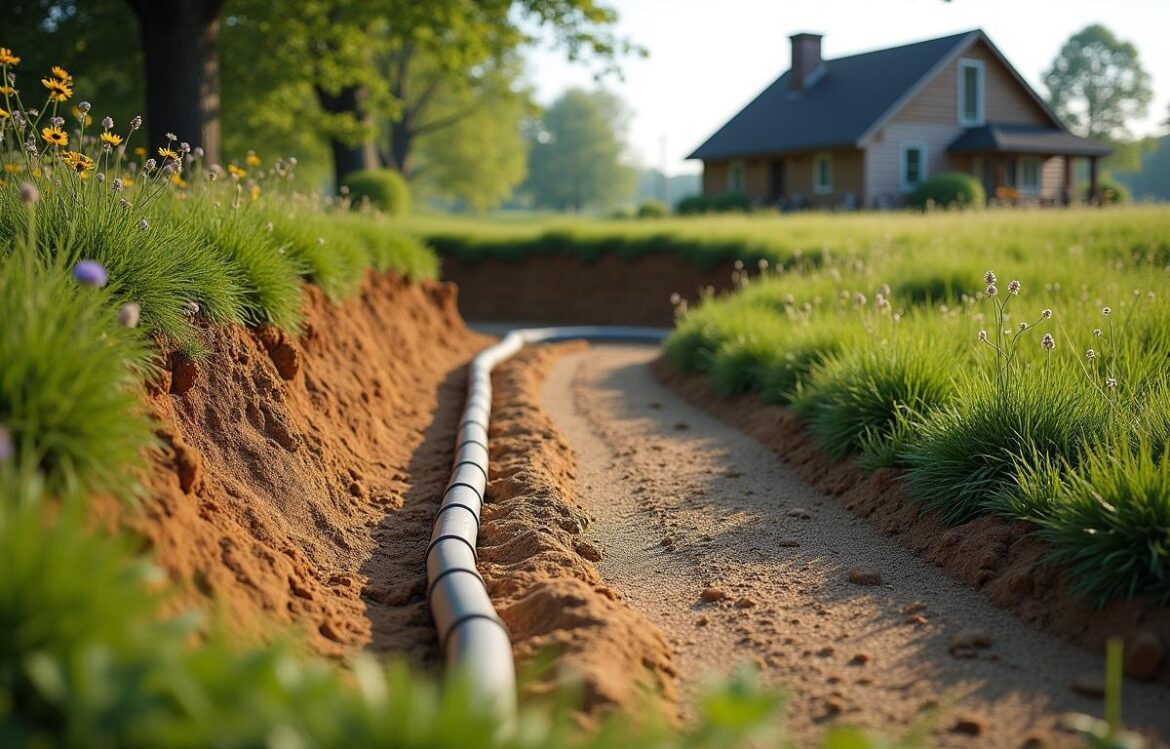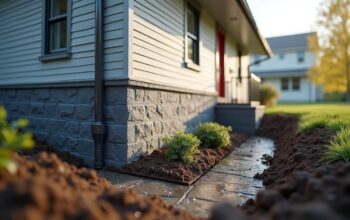
In rural and off-grid settings, wastewater can be managed safely with septic system options. From traditional setups to modern alternatives, the variety can be overwhelming at first. Choosing the right approach depends on factors like soil composition, local rules, and your household size. Taking the time to research each choice can prevent big headaches down the road and keep your property running smoothly.
Contents
Why Different Septic Tank Types Matter
Different septic tank types can influence everything from treatment capacity to how often you’ll need to schedule septic tank pumping. Some homeowners prefer conventional septic systems because they follow a familiar design. Others might need specialized tanks for unique property conditions. Regardless of style, working with an experienced team for septic tank installation can ensure you get the right fit.
Gravity-Fed Systems
Many traditional setups rely on gravity-fed systems to transport wastewater from the home into the tank, and then on to a drain field. This method doesn’t require additional pumps if the slope is correct. These systems are known for their simplicity, which can translate to fewer mechanical failures over time. However, the land requirements for septic can be more specific, because your property must have a natural downward slope for reliable flow.
Conventional Septic Systems
When people think of a residential system, they typically imagine conventional septic systems. These usually involve a large tank buried underground that separates solid waste from liquid effluent. Solids collect at the bottom, while liquids flow out into a drain field. Regular septic system maintenance—such as periodic septic tank pumping and using biological additives—helps keep these systems functioning at their best. Still, they may require ample area for a leach field design, so they’re not ideal for properties with limited space.
Choosing Drain Field Alternatives
Not all properties can accommodate a standard drain field. Factors like high groundwater, rocky terrain, or tough soil can prompt you to explore drain field alternatives. Subsurface wastewater disposal methods that adjust to these challenges can prevent backups and contamination. Consulting a septic system inspection professional early on will help you identify the best option.
Mound Systems
Mound systems are often selected when the natural soil is too shallow or not porous enough for a regular drain field. An elevated mound is constructed with layers of sand and gravel. Effluent is pumped or gravity-fed into this mound, which acts like a custom-filtering system. Although mound setups can be more expensive than standard installations, they allow safe wastewater treatment on properties with challenging soils or high water tables.
Exploring Aerobic Treatment Units and Other Advanced Methods
Aerobic treatment units stand out from traditional models because they add oxygen into the process. By infusing air, these units encourage faster bacterial growth, which breaks down waste more effectively. They can treat wastewater to a higher standard, making them an attractive alternative septic systems approach when aiming for environmental safety or limited space.
Package Treatment Plants
Package treatment plants function similarly to large-scale municipal wastewater treatment facilities, but on a compact scale. They’re often pre-assembled and can handle considerable volumes of wastewater on smaller lots. This approach offers advanced treatment systems ideal for businesses or multi-home developments. Though the septic system cost for a package plant can be higher upfront, the improved performance can offset expenses over time.
Biofilters for Septic Systems
Some homeowners turn to biofilters for septic systems when they need excellent nutrient reduction. Biofilters use layers of engineered materials where beneficial microorganisms thrive. As wastewater passes through, the microorganisms consume pollutants, leaving cleaner effluent. This eco-friendly approach often pairs well with other wastewater treatment methods, offering a more thorough cleaning process.
Composting Toilets
Composting toilets might sound unconventional, but they offer an environmentally friendly septic option that can reduce liquid waste loads. These units rely on natural decomposition, turning solid waste into relatively harmless compost with minimal water use. While they don’t replace a full septic system in most cases, they can significantly extend drainfield options by limiting the amount of water and waste entering the system.
Cesspool vs. Septic: Key Considerations
Although cesspools once served as a common waste disposal method, many regions now favor septic systems because they’re safer for both homeowners and the environment. Cesspools are little more than pits lined with porous materials that allow liquids to leach out. Over time, they can contaminate groundwater if not managed correctly. Modern regulations often discourage or ban new cesspool installations, making a switch to a septic system—or an upgrade like aerobic treatment units—a more responsible choice.
Seasonal Septic Care
Every type of waste treatment option benefits from seasonal septic care. Colder climates can require added measures, like insulating risers or adding straw over drainfields. During heavy rainfall, you might see slower drainage if the ground is saturated. Being proactive with this sort of maintenance keeps your system healthy year-round, avoiding costly mishaps.
Septic System Troubleshooting
If you notice slow drains or unpleasant odors, you may have a system that’s developing clogs or failing components. Prompt septic system troubleshooting can save you from bigger, costlier repairs in the future. Sometimes, a simple septic tank pumping or a swap of a broken pump resolves the issue. In other cases, you may need to reevaluate leach field design or even explore alternative septic systems if the land can’t accommodate your household’s demands.
Septic System Installation, Maintenance, and Costs
When planning a new septic system installation, you must factor in everything from soil testing to the final backfilling of trenches. Qualified contractors use data from percolation tests, topography surveys, and local septic system regulations to map out the best location. If your property poses unique challenges, advanced septic technologies might be necessary to ensure reliable wastewater treatment.
Balancing Requirements and Budget
Many homeowners weigh the cost of septic systems just as heavily as performance. While a simple gravity-fed setup might be affordable, it could be unworkable on a small or rocky lot. Mound systems or aerobic units can offer more flexibility but come with a higher price tag. Weighing the long-term benefits of better treatment against the initial expense can guide you in making a financially and environmentally responsible choice.
Environmentally Friendly Septic Options
Environmental impact has become increasingly important when evaluating wastewater treatment. Eco-conscious options like biofilters, composting toilets, and advanced treatment units help minimize pollution. Even conventional systems can be optimized by adding septic tank risers or pretreatment chambers to reduce the strain on your drain field. In areas with stringent septic system regulations, these greener methods may also help you secure necessary permits.
The Role of Ongoing Maintenance
A septic system’s lifespan depends a lot on consistent care. Tasks like septic tank pumping, filter cleaning, and periodic inspections keep your treatment method running at peak efficiency. If you notice soggy patches in your yard or slow drainage inside your home, it may be time for a septic system inspection. Timely repairs or modifications can extend the life of your setup, sparing you the hassle and cost of a complete replacement.
Future-Proofing With Advanced Septic Technologies
If you’re planning a home addition or foresee an increase in wastewater output, advanced treatment systems can offer peace of mind. Aerobic treatment units, package plants, and biofilters provide a higher quality effluent, lowering risks of environmental contamination. They also adjust better to changes in flow and usage patterns. Whether you’re building a new property or upgrading an existing installation, investing in forward-thinking designs can pay off in long-term reliability.
By staying informed about each method’s specifics, you ensure that your home’s wastewater disposal remains both safe and effective. Matching the right treatment system to your property’s particular requirements can lead to lower repair bills, fewer regulatory issues, and a healthier local environment.



